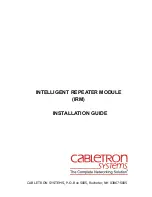
Applications manual
| 29
Panel Radiator
Design Manual
Panel Radiator Design Manual | 12.2009
Technical specifications are subject to change without prior notice
Balancing the system
Initial settings of flow setter valves will help to
ensure proper flow through all radiators.
Keep in mind that this is only a starting point
and that the system may require further
adjustment based on the heating
characteristics of the structure.
Procedure for setting the flow-setter valves.
1. Identify the largest radiator. In the above example it
would be the master bedroom radiator. The setting for
this radiator should be “N”. This radiator will have the
highest pressure drop and requires that the flow-setter
valve be fully open.
2.Using the Pressure Drop Chart on page 30-31, find the
output for this radiator (at selected ∆T) at the bottom of
the chart. Based on 6,000 btu/hr at a 20°F ∆T the flow
rate for this radiator is 0.6 GPM. Follow the 0.6 GPM
line vertically until you intersect the N setting. Reading
across to the left you will see that the pressure drop for
this radiator is approximately 12 in. W.C. or 1ft/hd.
3. Draw a horizontal line across the diagram at 12 in.
W.C.
4. Select the next radiator. Identify its btu/hr output, locate
this figure at the bottom of the chart as you did for the
first radiator. At the corresponding flow-rate, move
vertically on chart until you intersect the horizontal line
that you drew indicating 12” W.C. Find the appropriate
flow setting. If the value is between two settings, say 3
and 4, then simply set the valve between 3 and 4.
5. Repeat step 4 for remaining radiators.
6. Use guidelines in Table 10 to size main piping. In this
case, use 3/4” copper mains with 1/2” copper (or PEX)
to/from each radiator. Install a thermostat in master
bedroom. Size circulator based on total flow rate and
install balancing valve for flow control.
Piping Lay-out Suggestions:
1. For small systems, use one-pipe system with
monoflow tees or diverter valves.
Btu’s per loop:
15,000 - 20,000 Btu/hr with 1/2 “ copper
20,000 - 30,000 Btu/hr with 5/8 “ PEX.
Increasing the overall temperature drop in the system
from 20°F (11°C) to 30°F (17°C) or 40°F (22°C)
permits more radiation per loop. (See Table 14).
Oversize radiators by 20 - 30% at the end of a one-
pipe loop. Always install a balancing valve in each
loop to regulate the flow rate to eliminate possible flow
noise.
Maximum flow rate for diverter valves: 2 GPM
Maximum flow rate per radiator: 2.5 GPM.
2. For larger systems, use two-pipe reverse return or
multiple one-pipe systems with common supply and
return manifolds. Refer to Table 10 for pipe sizing.
Pump Selection:
1-3 loops: Grundfos UP15-42, Taco 007 or equivalent
3-6 loops: Grundfos 26-64 or equivalent
Use pressure bypass valve on two-pipe systems to
prevent deadheading the pump.
Radiator Selection & System Start-up Suggestions:
1. Size radiators based on heat load, location, available
space, desired style and system operating
temperatures.
2. Use of thermostatic sensor heads increases comfort,
eliminates problems with over sizing the radiation and
provides individual room control.
3. Balance the system to ensure proper heat output from
each radiator using the flow setter valve on each
radiator. Shut off thermostatic heads one at a time and
monitor system response. Make necessary
adjustments.
4. Retighten compression fittings slightly after initial
start-up.








































